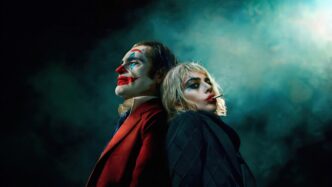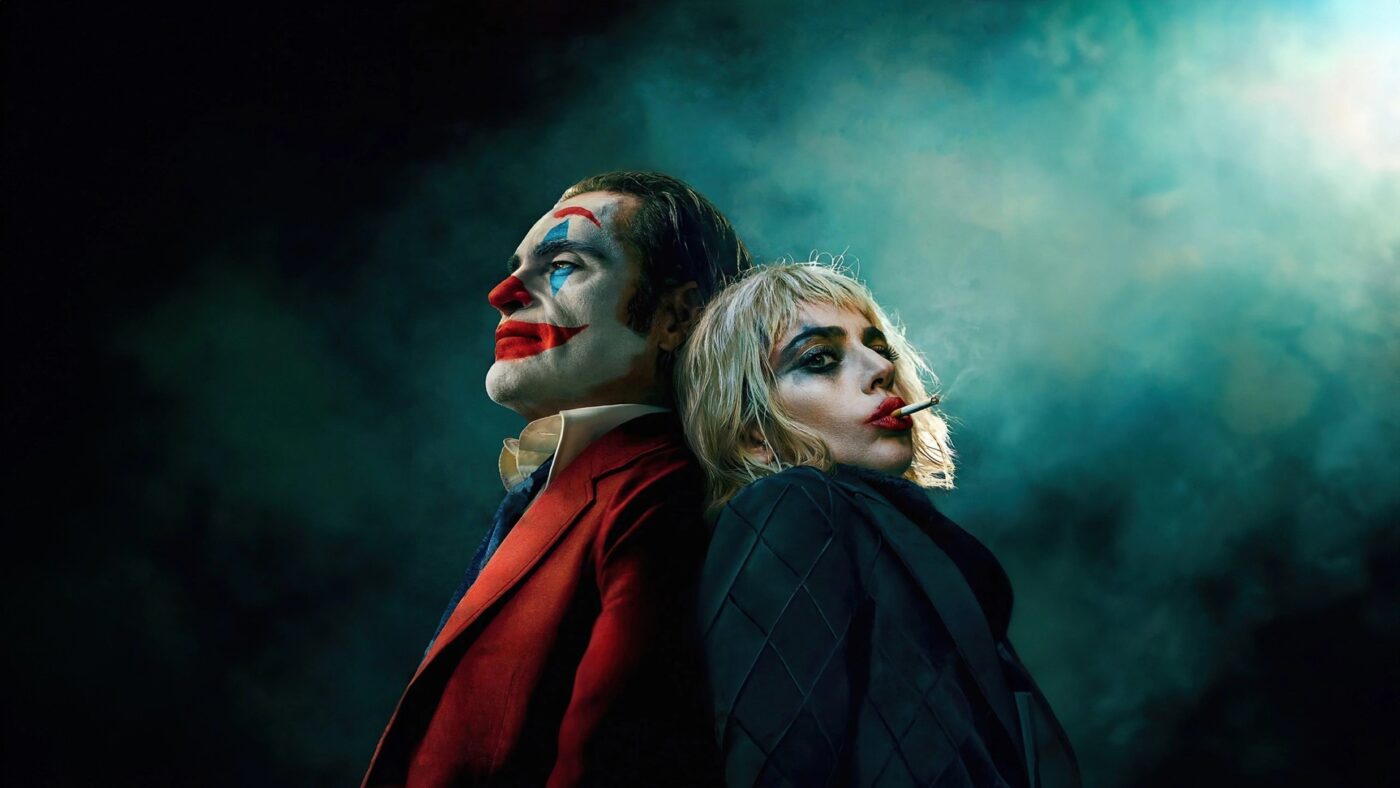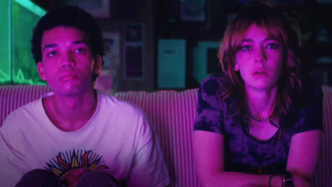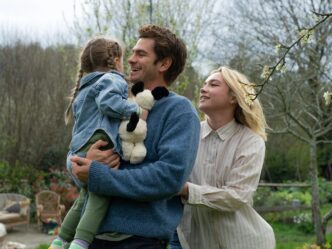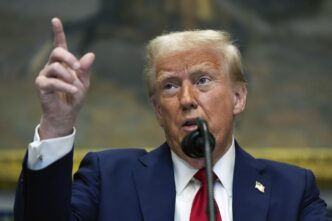In early October of 2019, a hush fell over theaters in anticipation of a film that promised to be starkly different from traditional superhero fare. That movie, Todd Phillips’ Joker, was a grim, unflinching take on one of DC Comics’ most iconic villains. Phillips, best known for his work on raunchy comedies like Old School and The Hangover, seemed an unlikely choice to helm a Joker origin story, and early commentary fueled concerns about the film’s portrayal of violence. Many worried that its depiction of a deeply troubled protagonist might spill over into real life, prompting potential audience outbursts. Yet this sense of possible danger only heightened curiosity about the movie. Eager to witness something raw and unsettling, audiences poured into cinemas to see the broken man who would eventually become the Clown Prince of Crime. Here, we conduct an analysis of why the Joker movies ultimately ended up becoming disappointing.
Joker soared at the box office, breaking the billion-dollar barrier worldwide—an astonishing feat for a low-budget, R-rated adaptation of a comic-book character. Critics and casual viewers were sharply divided on its artistic merits. Some praised its commentary on class conflict, decaying institutions, and the crushing weight of a society that systematically overlooks the vulnerable. Others labeled it a creative collage of Martin Scorsese’s Taxi Driver and The King of Comedy. Regardless of where people stood, Joker generated a storm of discussion. Suddenly, the Joker, long seen as a supporting villain in Batman’s orbit, rose to the level of main-event status.
In 2024, that success yielded a sequel: Joker: Folie à Deux.1 Anticipation soared all over again. Joaquin Phoenix, who had captivated audiences with his intense portrayal of Arthur Fleck in the first film, returned for another deep dive into the character’s psyche. This time, Lady Gaga joined the cast as Harley Quinn, reimagined as Lee Quinzel. Rumors of a musical element suggested a more theatrical, surreal exploration of the Joker’s mindset. Yet as the sequel reached theaters, many viewers were disappointed. Critics and fans alike described its pacing as sluggish, plagued by redundant flashbacks to the first film. The much-hyped musical angle felt underdeveloped, and a heavy focus on courtroom proceedings drained the story of tension. Those who had hoped for the same raw power they experienced in Joker left theaters feeling let down.
Where the original film had been edgy, surprising, and raw, Folie à Deux appears to repeat itself. It lacks the subversive thrill that made the first such a cultural flashpoint in 2019. Instead, it spends an inordinate amount of time retreading the same ground, often using legal hearings and recaps of Arthur’s early crimes to remind viewers what happened. The talk of riots and moral panic that surrounded the first film has given way to milder gripes about an unimaginative follow-up. Instead of moral alarm, critics now fault the sequel’s over-reliance on replays of the original’s themes, which feel stuck in place. Courtroom drama overshadows any sense of anarchic spectacle. The film’s musical sequences, brief as they are, never integrate organically with the narrative. Lady Gaga’s talents flash in only scattered moments before the story drags viewers back into the realm of attorneys and testimonies. The Joker, once a disturbing symbol of disorder, appears diluted and overshadowed by references to his guilt and illusions.
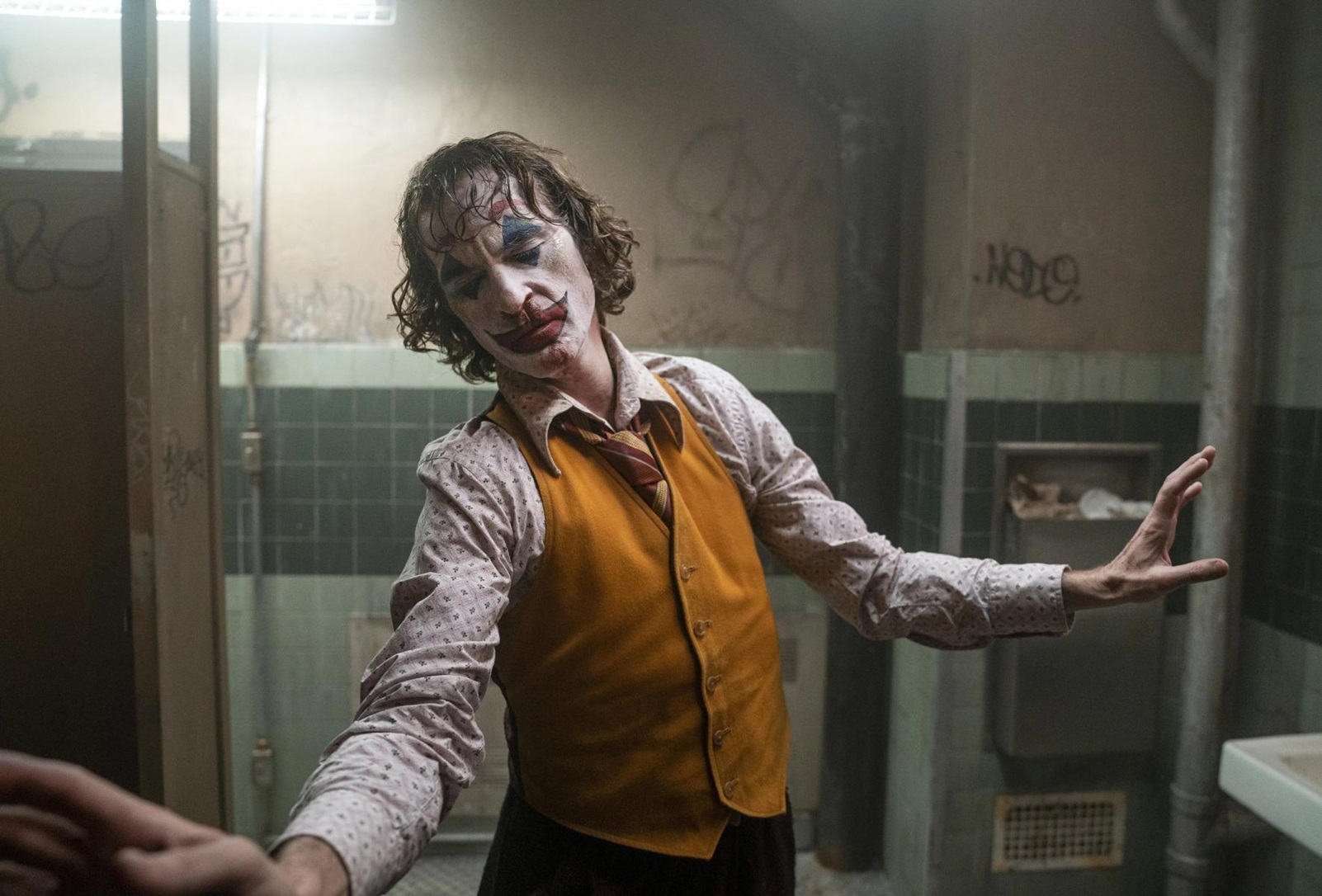
A large part of this disappointment stems from Todd Phillips’ decision to give the Joker a comprehensive backstory. For decades, the Joker—in comics, television, and film—existed as a figure of mystery. He might be a clownish prankster or a sadistic murderer, but in most of his incarnations, he thrives on being unpredictable and unknowable. Many storylines suggested the Joker had a tragic genesis—a chemical plant fall, a personal trauma, or simply “one bad day”—yet they seldom pinned down exact details. This approach left him as a mythic enigma, clashing with a hero devoted to precision and order. Batman stands for discipline, while the Joker flourishes in chaos and whimsy. Tension arises when the Joker refuses to follow any kind of moral or logical pattern.
Todd Phillips’ initial film did the opposite. He named the Joker Arthur Fleck and immersed him in a failing social system, complete with grimy apartments, canceled social services, and harried strangers. Viewers watched him unravel while attempting stand-up comedy. By the end, he had become a symbol of violent rebellion. This depiction worked because it was a novelty. The Joker had never been presented as so vulnerable, so thoroughly laid bare. Some labeled it a stark reflection of modern anxieties, others called it exploitative, derivative, or morally questionable. Either way, Joker elicited intense reactions, which fueled the film’s box-office triumph.
That polarizing reception made a sequel all but inevitable. The new chapter promised Lady Gaga as Harley Quinn—renamed Lee Quinzel—and teased a musical spin. Promotional materials implied a bombastic antihero couple singing and dancing their way through chaos. The reality of Folie à Deux proved subdued by comparison. Many sequences revolve around a courtroom setting. The momentum of the original’s unpredictable violence devolves into a catalog of Arthur’s legal troubles. Musical vignettes appear sporadically, feeling more like fleeting dreamscapes than integral parts of the story. The rest is spent revisiting details from the first film, draining what little tension might have remained. The film’s sense of danger, a cornerstone of the Joker’s identity, vanishes under the weight of repeated exposition.
In the source material, the Joker is known for mystery. In classic comics, readers never know if his recollections are accurate; he might invent multiple origins to confuse everyone, including himself. That ambiguity preserves his status as an agent of chaos. Phillips disrupted that tradition by thoroughly defining Arthur Fleck in the first Joker. The original film gambled, and it paid off, partly because the portrayal felt shocking and fresh. A sequel, however, heightens the risk. An analysis of the Joker being demystified—with his entire background explained—reveals the challenge of retaining the dread-inducing aura of the unknown.. In Folie à Deux, that question lingers unanswered. The Joker is stuck in a legal quagmire, forced to account for everything. Many who once found him alarming now find him routine.
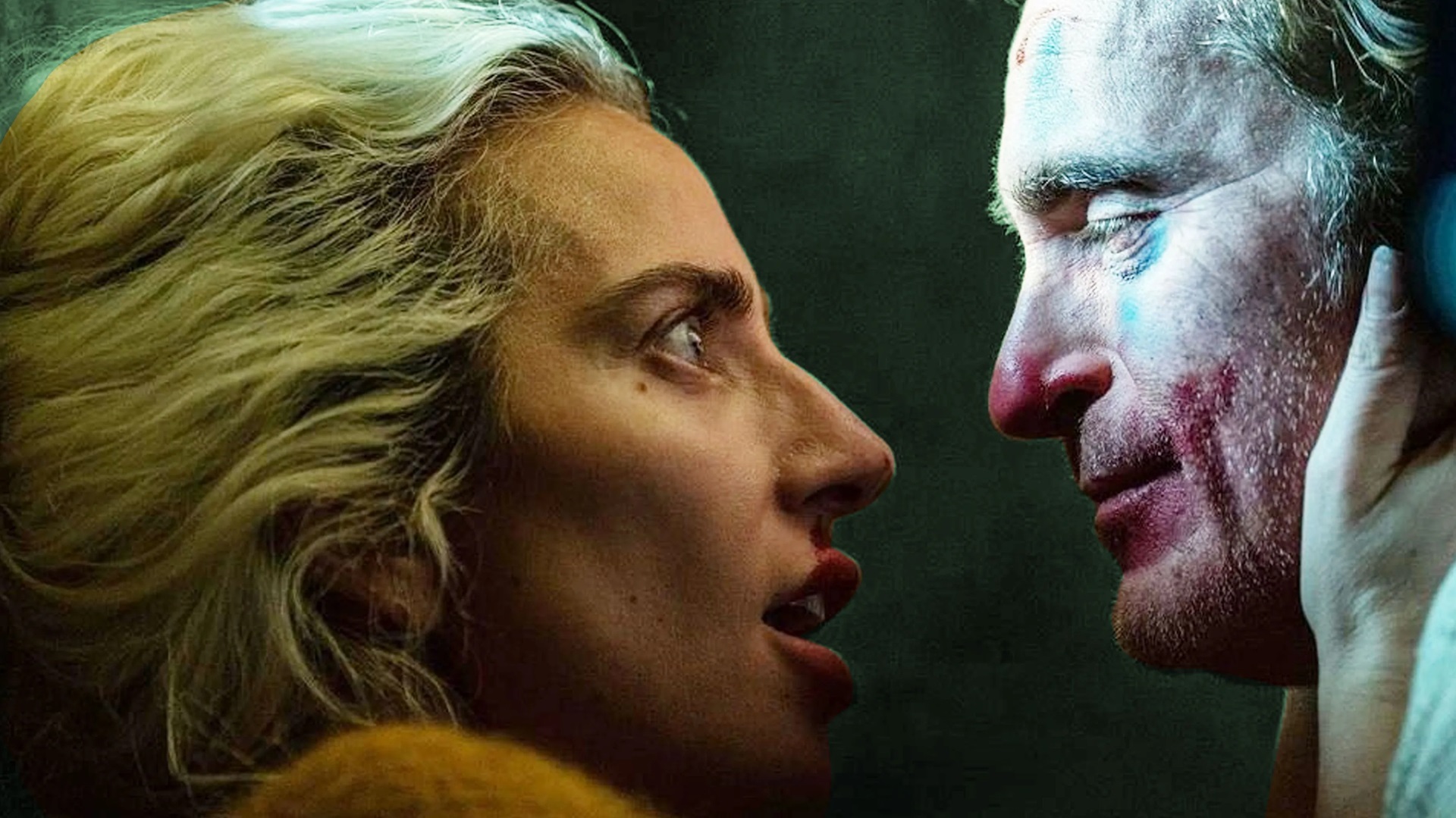
The introduction of Lady Gaga’s Lee Quinzel was supposed to invigorate the follow-up. Gaga has a history of outlandish art and provocative stage presence, so she seemed like the ideal fit to breathe weird, vibrant life into the Joker’s twisted universe. Early teasers painted a picture of an intense, possibly surreal relationship. Instead, Quinn mostly stands on the sidelines while the film devotes itself to courtroom depositions and old footage. When Lady Gaga does command the scene, she displays an energy reminiscent of her stage persona, but she never gets the narrative support needed to create a defining transformation. Instead, Folie à Deux repeats established details from Joker and tries to scold viewers for having found Arthur compelling in the first place. The result is a commentary that fails to spark new intrigue.
One might argue that Phillips is intentionally dragging Arthur into a dull, meticulous environment to show the real consequences of violence. If that was the director’s intention, the film’s blunt method of restating the Joker’s past leaves little for audiences to discover. The original film built tension by leaving us uncertain how Arthur might lash out. We empathized with him as a victim until he committed crimes that severed our sympathy. That moral whiplash kept viewers unsettled. In the sequel, no whiplash remains. We know Arthur’s crimes; we see them recounted in testimony after testimony. He’s forced to watch the system condemn his entire spree, and the system, in turn, insists upon re-litigating the first movie for the audience. The Joker’s fearsome mystique withers.
In comics, the Joker is strongest when pitted against a moral figure like Batman or a determined authority figure who struggles to contain him. The first Joker sidestepped this dynamic by depicting Arthur’s descent in a standalone environment. That decision worked once because the story ended in an eruption of lawlessness. Folie à Deux shows what happens afterward, but lacks a new source of conflict. Arthur isn’t locked in a battle of wits with an equally driven opponent. He’s a defendant facing lawyers, judges, and brief bursts of fantasy. If he had used the court as a stage for elaborate schemes, perhaps the sequel would have felt more like a natural extension of the Joker legend. Instead, we watch him endure mundane legal processes, struggling to keep any sense of menace.
Folie à Deux tries to highlight how unappealing the Joker is when examined without illusions. Arthur is not a cunning supervillain but a mentally fragile murderer. While that might be a valid thesis, it doesn’t sustain a two-hour film with few fresh concepts. The subversive energy that once fueled the first Joker is replaced by a methodical condemnation of its protagonist. From a thematic standpoint, that might serve as a chastisement of fandoms that embrace violent antiheroes, yet the film’s structure lacks the momentum needed to make that point resonate. Viewers who admired the original’s gritty approach might now feel like they’re being lectured, though the story never quite delivers a coherent lesson.
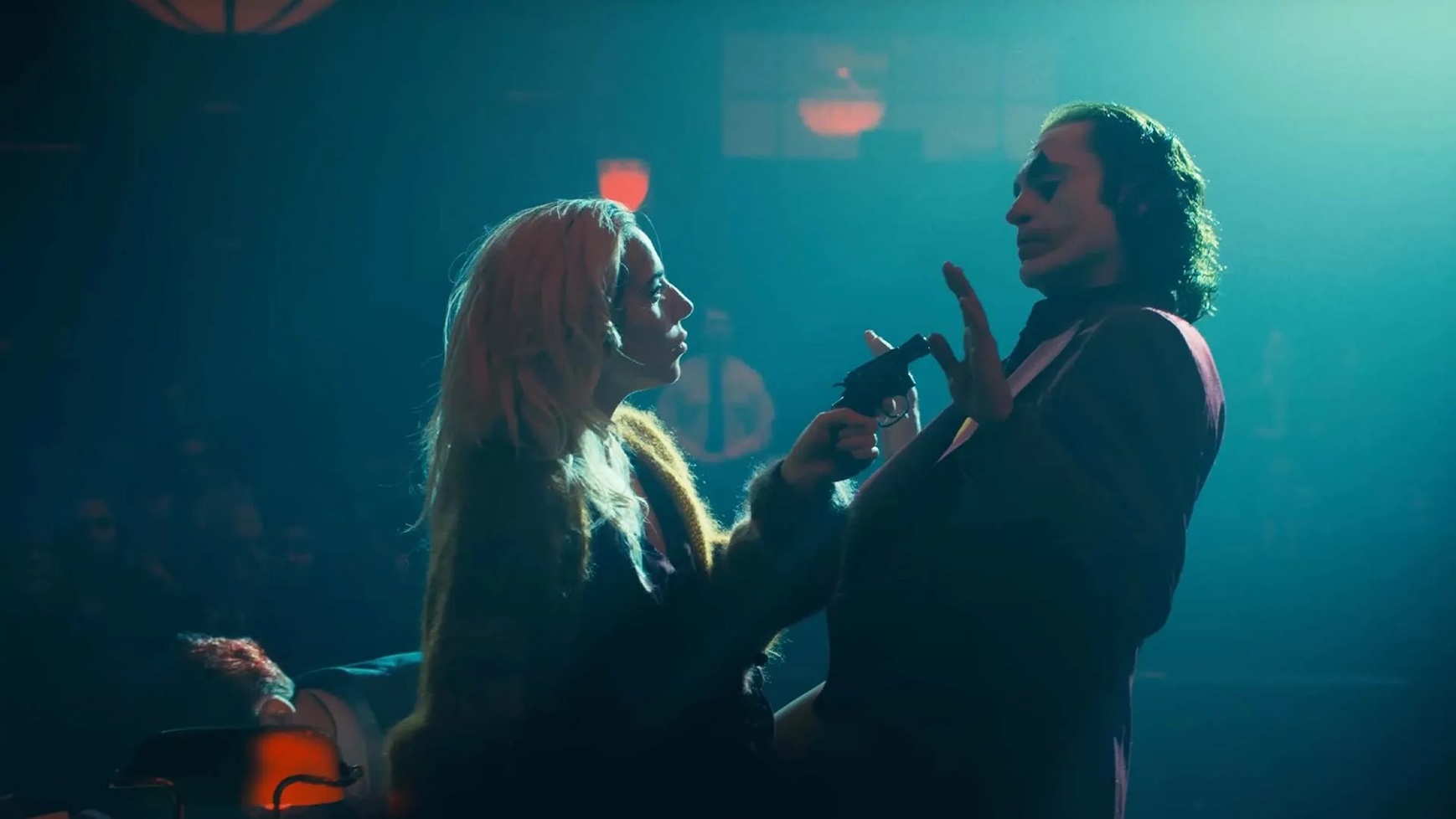
When audiences think of the Joker, they imagine a lethal clown who challenges any force of order. He might be comedic, horrifying, or both, but he’s never dull. The first film channeled that unpredictability through Arthur’s deteriorating mental health, culminating in riots and a notable talk-show murder. Quentin Tarantino famously remarked that, in the theater, viewers felt conflicted about wanting to see Robert De Niro’s smug talk-show character die. That level of subversion made the movie unforgettable. The sequel, by contrast, devotes long scenes to restating that murder. Instead of tension, we get clarification and courtroom monologues. The murder is no longer shocking—it’s a past event, dissected in the bright glare of institutional authority.
Media hysteria surrounded the original Joker, with news outlets worrying it might inspire real-life violence, especially among isolated or disturbed men. That controversy, justified or not, gave the film a sense of danger. People bought tickets to see what could possibly incite such alarm, then argued over the movie’s moral stance. Folie à Deux arrives without that controversy. No one frets about mass shootings in relation to the sequel, so the conversation turns to typical cinematic critiques: pacing, continuity, underused cast. That alone reflects how crucial context was for Joker’s success. Once the real-world tension dissipates, the sequel stands on its own—and many find it unremarkable.
Critics often describe Folie à Deux as a courtroom drama occasionally interrupted by half-hearted musical fantasies. Instead of delivering a bold new style, it sits in a limbo between mundane reality and fleeting illusions. Some had hoped that the Joker’s mania would explode into full musical numbers, letting the audience glimpse the world as Arthur sees it. But the sequences that do appear feel disconnected. They don’t deepen our understanding of Arthur’s psyche. They don’t bring Lee Quinzel to life as a true partner in crime. They merely highlight the sequel’s indecision about its own identity. Is it a legal reflection on murder, or a deranged love story set to music? It tries to be both, ending up neither.
Fans of musicals, imagining a flamboyant, unhinged world, are disappointed that the film never fully commits to that stylistic approach. People who liked the first Joker for its gritty realism and violent outbursts struggle with the sequel’s shift toward replays and dreamlike interludes. Instead of forging a radical path, Folie à Deux reminds viewers of something they already know: Arthur Fleck is a tragic criminal. By the film’s conclusion, they haven’t learned anything new, nor have they witnessed an engaging cat-and-mouse scenario. The story, which might have soared through surreal theatrics, is weighed down by legal routines.
One might point to an analysis of several Joker-centric comics for comparison: The Killing Joke, Batman: The Three Jokers, The Man Who Stopped Laughing, and others. Many toy with the Joker’s identity but keep details open. By refusing to confirm how he came to be, they maintain an aura of unpredictability. Todd Phillips pinned the Joker down as Arthur Fleck in the first film, so Folie à Deux is left with an already defined man. That’s the biggest hurdle: the Joker’s mystique has disappeared. A sequel might recover that spark by showing an escalation of his chaos, but Folie à Deux instead immerses him in bureaucratic drudgery. Flashbacks rehash the original film’s events, overshadowing Lady Gaga’s attempts to bring a fresh dynamic as Lee Quinzel.
Where Joker once felt urgent and raw—helped by extratextual fears of incitement—Folie à Deux feels like a cautionary tale about sequelitis. This second act wants to dismantle any lingering glamor around Arthur, yet it forgets that some measure of excitement is crucial to keep audiences involved. By fixating on moral condemnation, the film ends up emphasizing tedium. Instead of leaving the theater shocked or thoughtful, many viewers feel bored by scenes that recap a well-known origin story.
When talk-show debates raged over Arthur Fleck’s incel-like qualities, the discussion helped Joker stay in headlines. Now, that same conversation no longer resonates. The Arthur of Folie à Deux barely stands out beyond being a disgruntled man under trial. Meanwhile, Lady Gaga’s talents, which could have cast a bright spotlight on the reimagined Quinn, remain strangely muted, limited to cameo-like bursts of performing. Some fans argue that her presence hints at an intriguing angle: she wants Arthur to be the grand mastermind the public imagines, but he isn’t. That might be an interesting subversion if it were allowed to breathe. Instead, the film confines her in a story about re-litigating a violent spree we’ve already dissected.
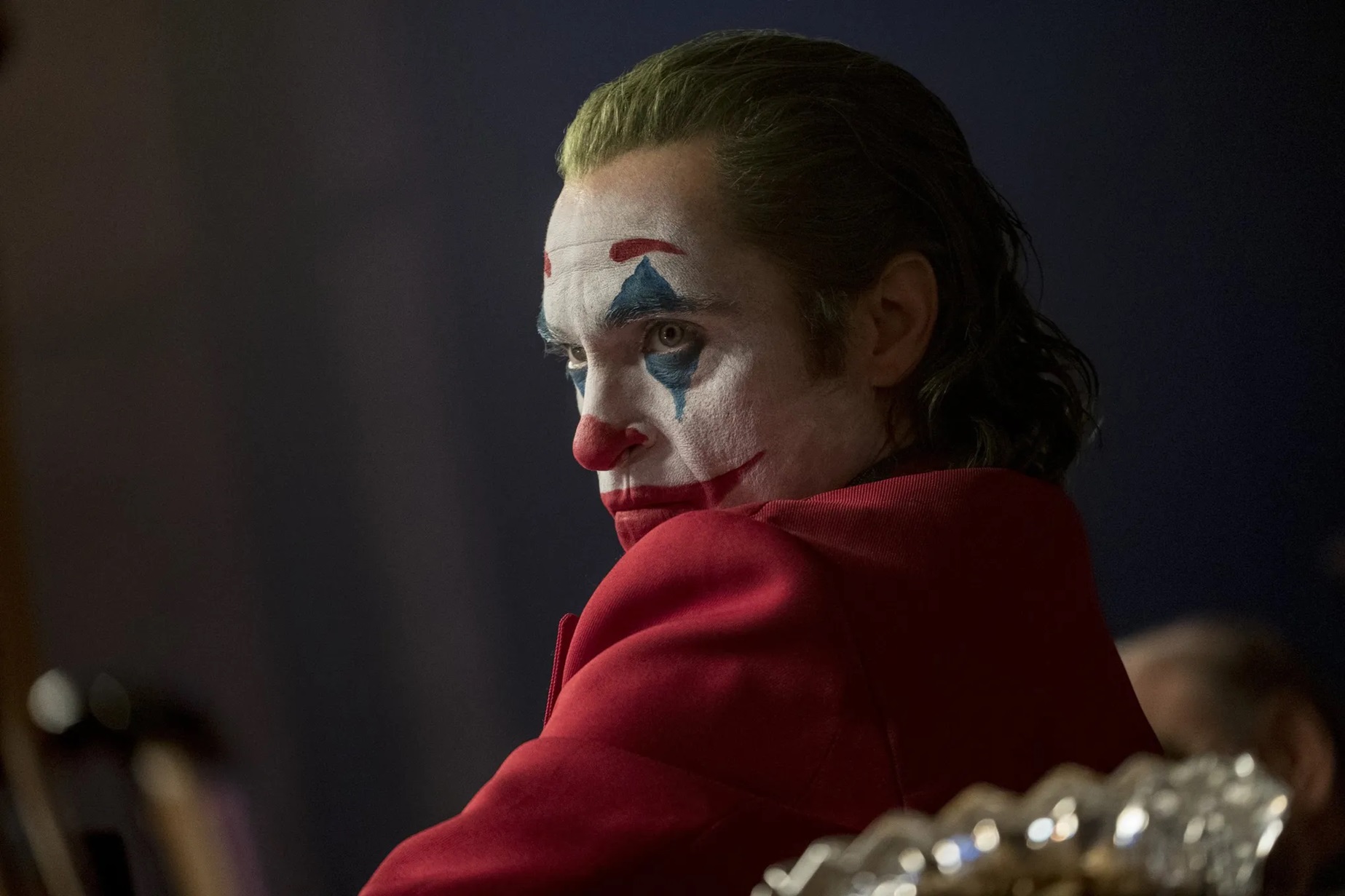
Even the violence in Folie à Deux feels subdued or unpleasant without capturing that hair-raising mania. Critics note that the film seems determined to show us that murder is not entertaining. It might be aiming to shame people who once cheered for Arthur. While that message can serve a purpose, it doesn’t necessarily make a compelling Joker story. The Joker traditionally entertains, even in his cruelty; he cracks jokes, sets traps, or pulls off visually arresting capers. Arthur Fleck, tethered to court appearances, has few chances to do so here.
At times, the film seems to chastise its own existence. It no longer wants to be the edgy cultural lightning rod that Joker was, yet it doesn’t offer a creatively robust alternative. By repeatedly pointing out the drab reality of Arthur’s life, it lacks the spark that might otherwise keep us invested. If the sequel intended to critique the fan culture that hailed Joker as a masterpiece, it underestimates the audience’s need for an intriguing plot or new developments. Instead, viewers see an inert storyline that reiterates known facts about Arthur’s crimes.
Box-office projections reflect this shift in public interest. Folie à Deux was predicted to underperform, and many spectators left theaters shaking their heads. The loudest feedback is that the sequel lacked both the shock value and the structural coherence to stand on its own. One might question if the creative team was unsure whether to replicate the bleak mood of Joker, turn the premise into a surreal extravaganza, or venture into more conventional territory. The outcome straddles these possibilities, delivering none with conviction.
On social media, commentary about the film ranges from disappointment to indifference. Some recall the fervor that preceded Joker, contrasting it with the muted reaction to Folie à Deux. Others note that the talk-show murder was iconic and instantly meme-worthy, whereas the sequel’s set pieces barely generate a ripple of conversation. It’s not so much that the sequel is horrible as it is forgettable—a fate many find worse than inciting moral outrage.
The faint praise often goes to small details, like Phoenix’s unwavering commitment to the role or Gaga’s attempts to bring flair to an underwritten character. Audiences who choose to find deeper meaning frame Folie à Deux as a “fable about how real justice can defang a mythic villain,” though that interpretation doesn’t quite elevate the film’s energy. In short, critics and fans appear united in describing the sequel as tepid. Where the Joker once danced a line between empathy and terror, he’s now pinned down by a penal system and a script reluctant to move forward.
From a broader perspective, Folie à Deux exposes the hazards of trying to replicate lightning in a bottle. The first film arrived at a cultural moment when discourse around mental health, loneliness, and class tensions was reaching a fever pitch. Todd Phillips seized that atmosphere, delivering a performance-based drama that many called timely. The sequel attempts to cash in on that success without the same external force of controversy. Once the moral panic dissipates, viewers focus on whether the film itself is exciting, and in this case, many say it is not.
Despite the film’s flaws, some defenders point to bold elements: the subversion of the Joker–Harley dynamic, the critique of Hollywood’s love for villain-as-hero stories, and the refusal to romanticize Arthur. However, each of these points still gets lost in a drab, repetitive structure. If the sequel had pinned its hopes on Gaga’s character, giving her a more substantial arc, perhaps we’d see fresh conflict. Instead, the references to fandom or “stan culture” remain vague. Fans expecting a twisted musical romance found only scattered fragments that never mesh into a coherent style.
People recall the final scenes of the original Joker, in which Arthur dances on a car amid a riot, representing the raw, horrifying allure of a figure who has snapped under society’s neglect. That scene hammered home the danger. Folie à Deux, spending its final act on trial verdicts and half-baked illusions, can’t replicate that sense of primal release. Any attempt to push boundaries remains confined to sporadic dream sequences. If Joker was a lightning rod, the sequel is more like a flickering lightbulb.
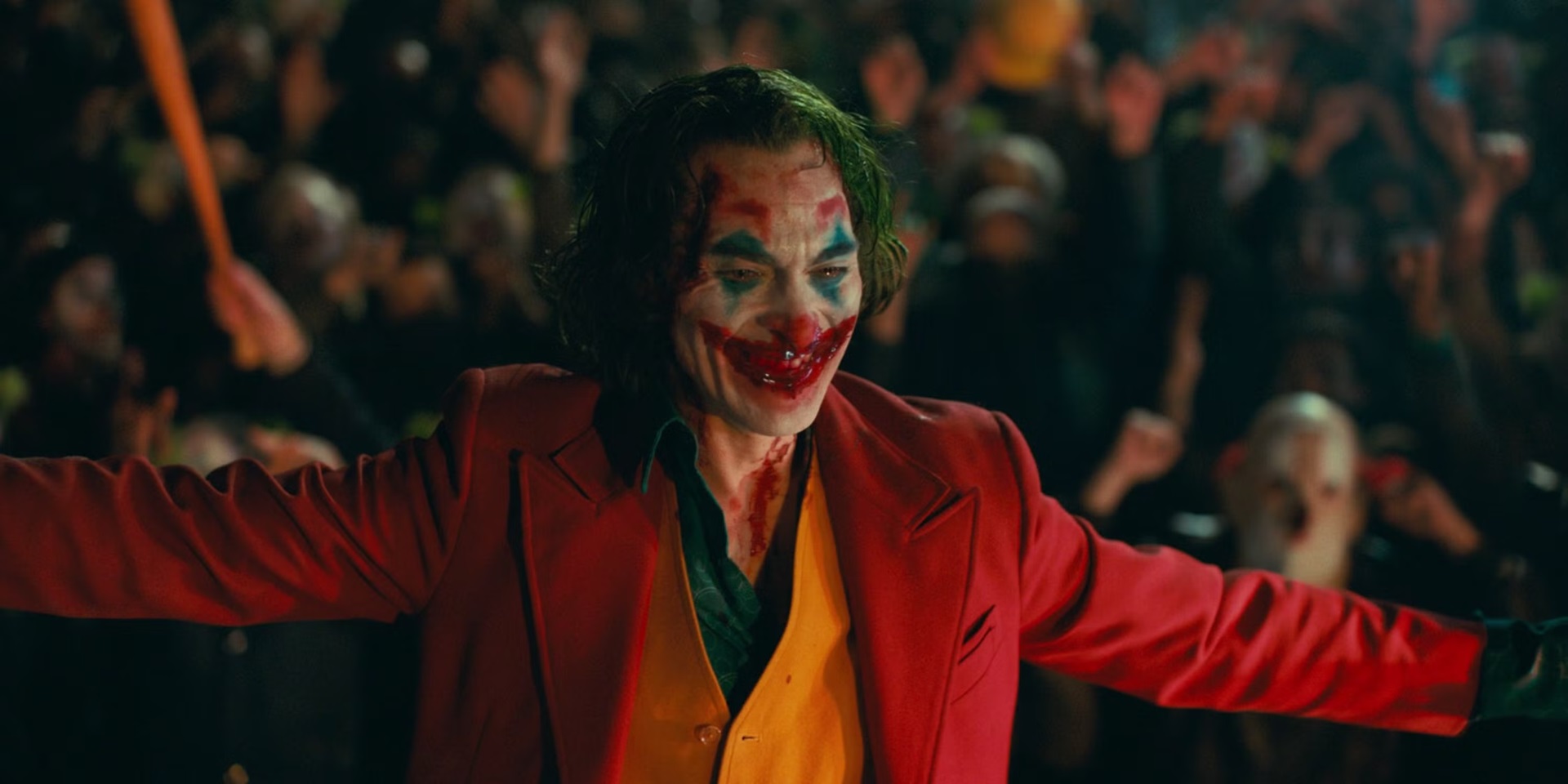
In any story featuring the Joker, unpredictability serves as a hallmark. We should never be fully certain what he’ll do next or how he perceives reality. Todd Phillips first achieved that uncertainty in Joker by gradually revealing Arthur’s mental anguish. In Folie à Deux, everything is on the table: we know Arthur’s background, his triggers, and his modus operandi. Instead of leveraging that knowledge for a cunning escalation, the film merely recounts it, as though fulfilling an obligation to remind us how he became who he is. Such an approach deflates tension and fails to offer new insights.
One might argue that Folie à Deux attempts to reveal how illusions crumble under scrutiny. Yet for audiences hungry for a Joker story, illusions are part of the thrill. Once illusions crumble, we’re left with a drab man in a courtroom, retelling a violent rampage. There’s no flamboyant mania, no cunning plan. Lady Gaga’s Lee Quinzel might have embodied the fan who clings to the Joker’s mystique, but the script never grants her enough presence to transform that concept into the sequel’s core. Instead, the film parcels out short duets, overshadowed by the next legal interrogation.
In the end, Folie à Deux highlights a classic comic-book truth: the Joker resists thorough explanation because he’s most potent as a shape-shifting chaos agent. Todd Phillips, after achieving massive success with the first film’s gritty spin, doubled down on the realism, inadvertently confirming that a fully explained Joker is less effective over time. Once we know who he is, it’s tough to remain unsettled by his madness. The sequel holds him in place, rather than letting him roam free as an icon of destruction. The resulting film feels more like a postscript than a bold continuation.
This deflation parallels how audiences responded. In 2019, the talk surrounding Joker ranged from incitement fears to bombastic praise. In 2024, viewers left Folie à Deux with polite shrugs, lamenting its failure to surprise. Word of mouth quickly turned lukewarm, prompting some to skip the theatrical experience. Where Joker was seen as “dangerous,” Folie à Deux is seen as “dull.” That difference reveals a deep connection between hype, controversy, and a film’s cultural position.
Down the road, DC may reintroduce the Joker in an entirely different form. He could appear in another Batman movie, or cameo in a future ensemble piece, wearing a new face and method. Such reinvention is part of his mystique. Phillips’ grounded, methodical take might remain a chapter in the Joker’s mythos, known for one spectacular hit and a tepid sequel. The character’s next appearance may well ignore or sidestep these two films. It’s telling that the Joker, as a concept, has flourished so many times: each portrayal taps into some fresh angle. A single, continuous storyline doesn’t easily accommodate him, especially if it insists on deep realism.
In a sense, Folie à Deux might serve as a caution for future comic-book adaptations. Explaining a villain’s every trait and motivation can be compelling once, but attempting to expand that explanation often deprives the character of the resonance that comes from mystery. The Joker thrives when he’s an agent of the unexpected. By holding him up for endless analysis, the sequel robs him of the shock factor that once made him captivating to watch.
There’s also a lesson here about hype. Joker arrived with swirling controversies and fueled debates. Folie à Deux tried to leverage the same brand recognition but without the same external tension. When people have no moral or political panic to latch onto, they examine the film on its own merits, which in this case prove underwhelming. That gap between hot-button sensation and actual content makes Folie à Deux a study in how quickly a cultural phenomenon can fizzle when the flame of controversy is absent.
Still, some fans argue that Folie à Deux has virtues. They see it as a bold stance: it’s telling viewers to look more critically at the Joker and realize his glamour is hollow. They praise the film for exposing the banality of violence. Yet these arguments often acknowledge the film’s lifeless structure. Whatever point it wants to make, it does so repeatedly, without building dramatic momentum. The notion that “murder isn’t fun” can be conveyed in a single line, not a drawn-out retread of a previous tale.
Within the pantheon of Joker performances, Phoenix’s portrayal remains gripping, but a second round offers diminishing returns. The sense of discovery is gone. Instead of watching a man break down barriers, we watch him justify or revisit old transgressions. Lady Gaga, for her part, provides glimpses of a talented performer straining to spark life in an underdeveloped role. Her scenes might have ignited the film if they had been central, but they’re scattered and overshadowed by the gloom of repeated recollections.
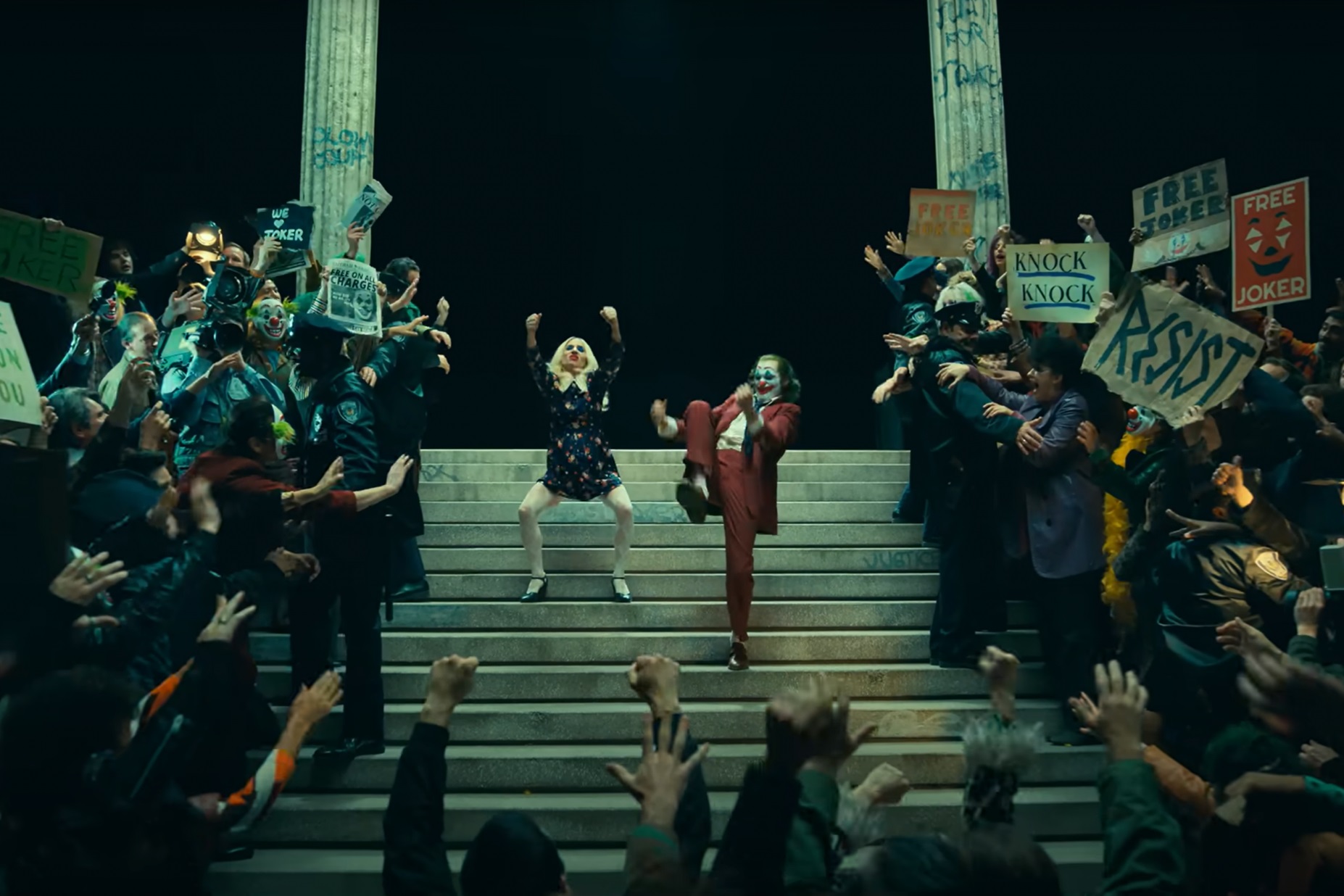
Ultimately, Folie à Deux ends up demonstrating that not every blockbuster sensation should spawn another chapter. The best closure might have been to let Joker stand on its own as an unsettling one-off. By returning to Arthur Fleck’s story without a strong new direction, the sequel underscores how short-lived that first phenomenon was. Joker itself channeled the dread of the period surrounding its release, as well as the controversies of mental health, class division, and random violence. Folie à Deux, in trying to follow up, arrives at a moment when audiences have moved on to other concerns. The film’s artistry must carry the day, and many find that artistry lacking.
People still discuss Joker with strong opinions, whereas Folie à Deux prompts more subdued takes. The conversation isn’t about moral peril but about the film’s plodding approach and disjointed musical elements. That shift illustrates how Folie à Deux fails to replicate the cultural lightning that struck in 2019. It stands as a quieter afterthought, lacking the searing intensity that once dominated headlines.
In time, Joker: Folie à Deux may be remembered as an example of how forcibly extending a self-contained narrative can weaken its potency. The Joker is a character built for reinvention, yet Todd Phillips anchored him in realism and tragedy, leaving little room for a second eruption. Instead of pushing boundaries or pivoting to a new style, the film recaps the past in an earnest but tiresome manner. The dullness is a stark contrast to the moral chaos that made Joker unforgettable.
After theater lights go up, fans file out with subdued reactions, perhaps reflecting on how ephemeral hype can be. Joker brought moral debates, heated arguments, and a sense of danger. Folie à Deux offers largely forgettable moments, except for a few creative flashes from Lady Gaga or sudden illusions in Arthur’s mind. None of that coalesces into a bold statement. People who once hoped for an epic, twisted musical see only an outline of that idea, overshadowed by testimonies and verdicts. The Joker’s flamboyant mania, the very reason he endures in popular culture, feels absent.
When the film finally ends, viewers leave the cinema pondering what the sequel accomplished. If the message is that the Joker is no longer fun, or that his violence is never worth celebrating, that might resonate on a purely intellectual level. Yet cinematically, it falls flat. Audiences expect a Joker film to stun or disturb, but Folie à Deux methodically drains every ember of excitement from Arthur’s world. Perhaps that is precisely the point, but it doesn’t make for a memorable ride.
Meanwhile, the Joker’s legacy remains safe in the broader world of DC. Another director might one day recast him in a new storyline, ignoring these two films. The character’s heritage is flexible enough to handle multiple interpretations. Phillips’ contribution can be seen as a fleeting phenomenon, with the first movie heralded for its brashness and the second overshadowed by its inertia. Future storytellers may avoid locking down the Joker’s history so rigidly, recalling how quickly that limits creative possibilities.
In summation, Joker: Folie à Deux reveals the perils of pulling back the curtain on a mysterious villain and then trying to revisit him in a second act that replays old plot points. The court trials and truncated musical numbers rarely create tension or wonder. The occasional attempts to mock fan culture or invert the Joker–Harley relationship remain underdeveloped. The result is a film that struggles to command attention. Where Joker once rattled audiences with its violence and ambiguity, Folie à Deux trudges through a subdued landscape of recaps.
Some will defend the film as an intentional subversion, an argument that it’s refusing to let the Joker be cool. That may be valid thematically, but the actual viewing experience leaves many people bored. Instead of subversion through imaginative spectacle, the sequel preaches monotony. The next iteration of the Joker—be it comedic, horrifying, or a blend of both—will likely pivot away from this path, reviving the sense of awe that used to define the character. Todd Phillips’ saga concludes on a note of diminished returns, serving as a reminder that some icons flourish when kept in shadow.
For now, Folie à Deux closes the chapter on Phillips’ realistic Joker with a listless finale. It lacks the muscular shock of its predecessor, offering primarily legal drudgery and fleeting illusions. The grand musicals teased in marketing never fully arrive, and Lady Gaga’s character doesn’t have the scope to offset the film’s repetition. Fans revisit memories of Joker’s final riot scene and realize how far we’ve drifted from that fervor. Folie à Deux might retain a certain curiosity value for die-hard followers, but it no longer has the incendiary spark that turned Joker into a phenomenon. Instead, it highlights how thoroughly a sequel can deflate a pop-culture moment by failing to recapture or reinvent its core mystique.
